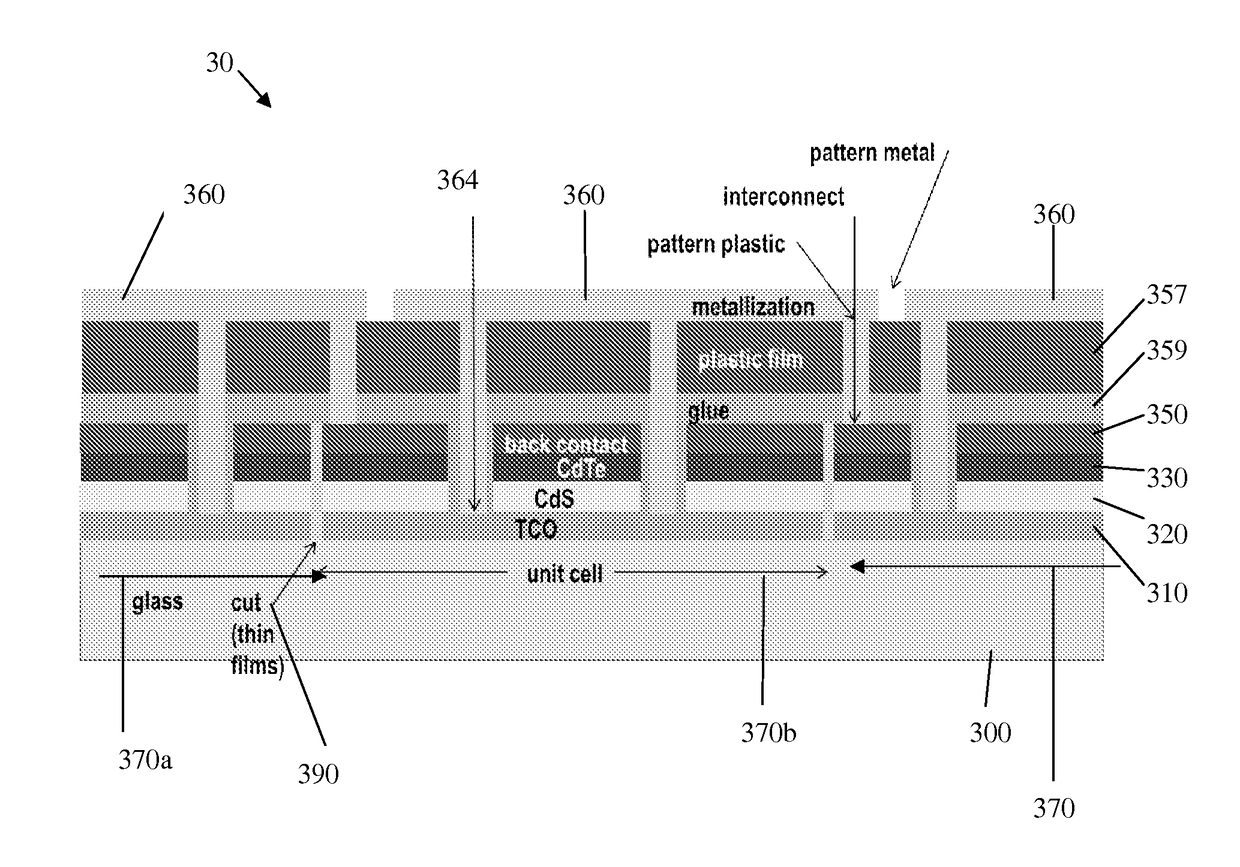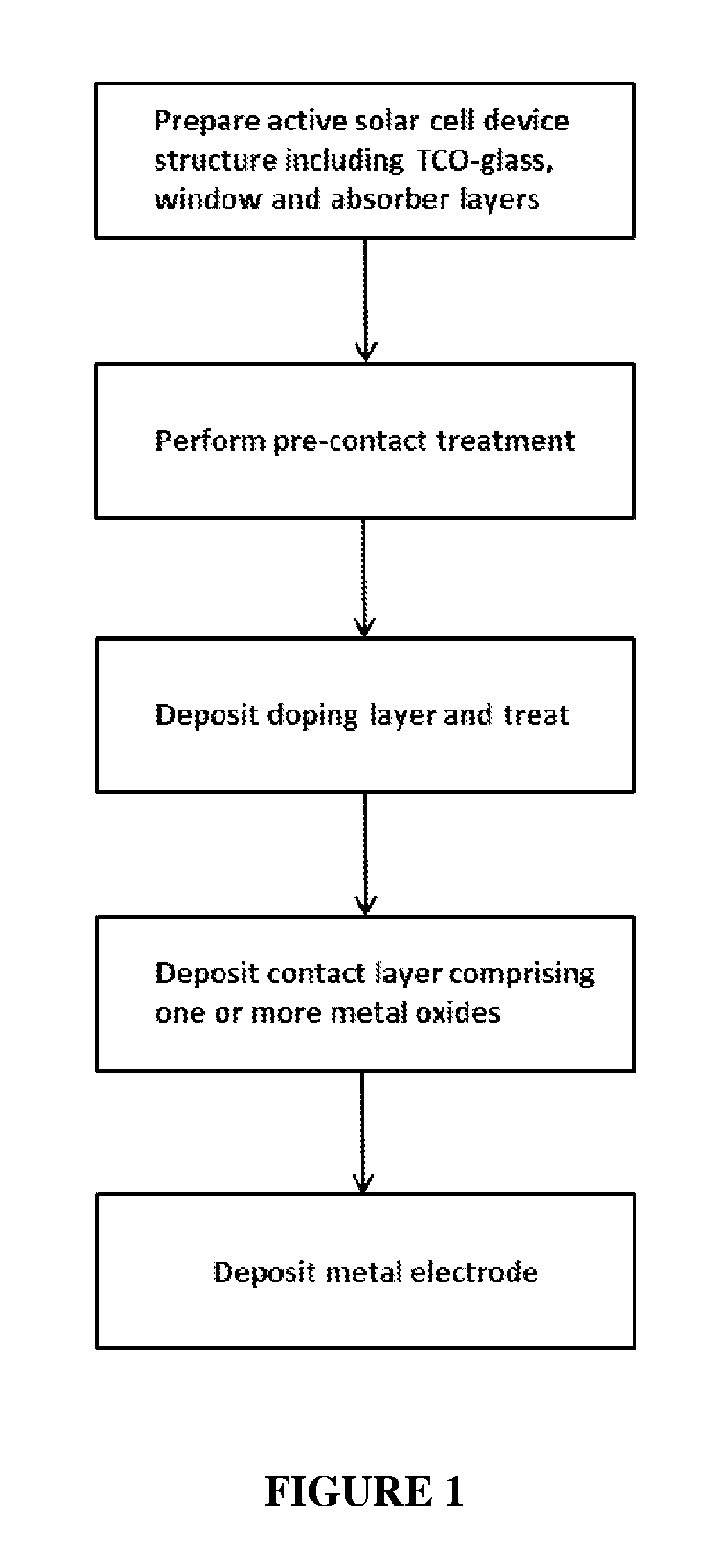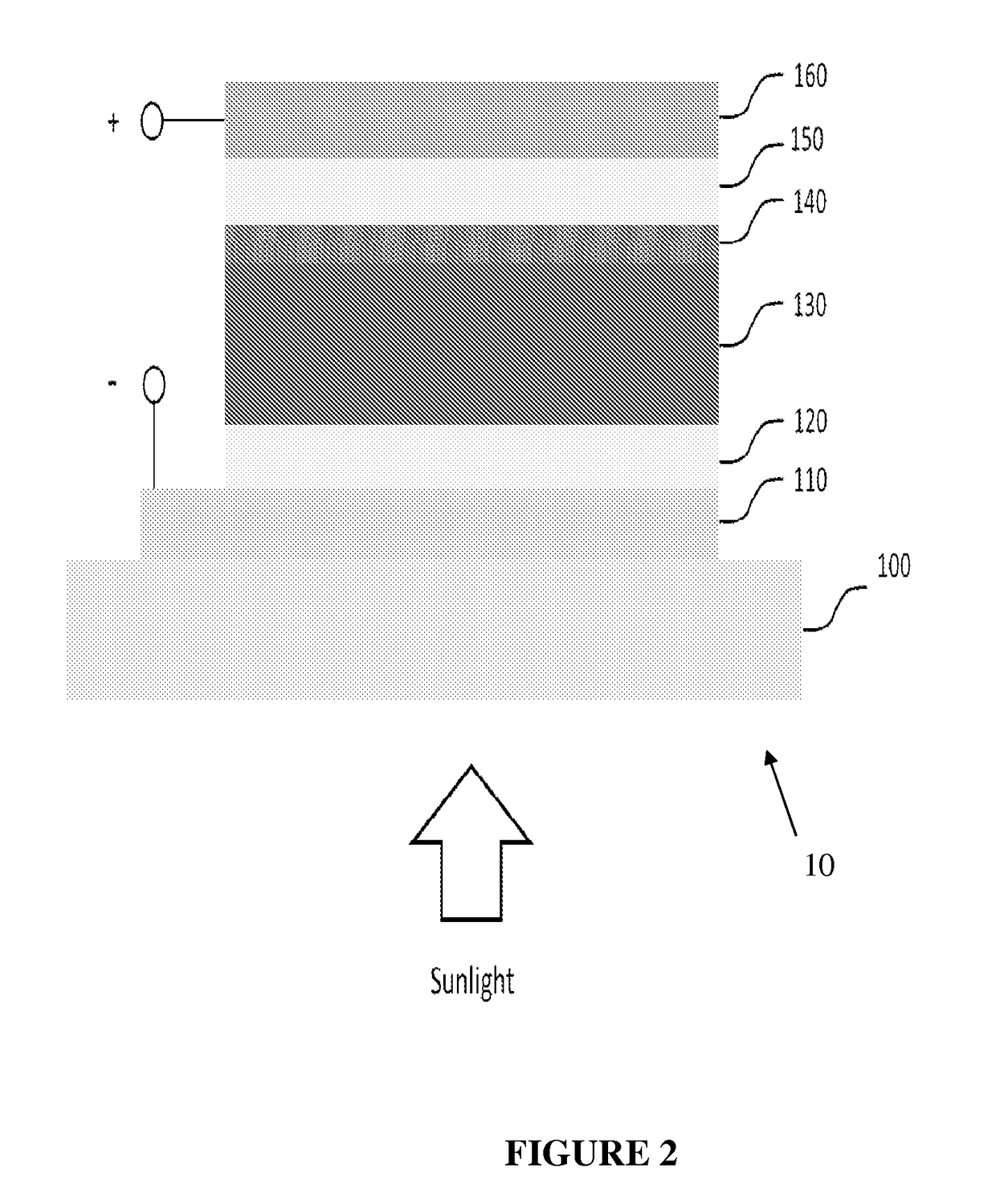System and method for thin film photovoltaic modules and back contact for thin solar cells
a solar cell and photovoltaic module technology, applied in the direction of basic electric elements, electrical apparatus, semiconductor devices, etc., can solve the problems of solar cell instability and performance degradation, non-ideal solutions, and ohmic contact to active semiconductors historically presented difficulties, etc., to improve cdte photovoltaic devices/modules.
- Summary
- Abstract
- Description
- Claims
- Application Information
AI Technical Summary
Benefits of technology
Problems solved by technology
Method used
Image
Examples
example 1
[0054]In exemplary embodiments of the present disclosure and as shown in FIGS. 1-2, the structure of the active solar cell or photovoltaic device 10 is first formed. For example, the transparent substrate 100 (e.g., glass substrate layer 100) can be coated with a transparent conductor (TCO) 110. The transparent conductor layer 110 can include a transparent conducting oxide overcoated with a high resistive layer, or of other similar such layer performing such function.
[0055]A window layer 120 is then positioned on the transparent conductor layer 110. In exemplary embodiments, the window layer 120 can include CdS or oxygenated CdS, and can be deposited by chemical bath deposition, sputtering, or other suitable means / processes.
[0056]A semiconductor absorber layer 130 is then positioned on the window layer 120. In certain embodiments, the semiconductor absorber layer 130 includes CdTe, and can be deposited by close-spaced sublimation, vapor transport deposition or other suitable means / p...
example 2
[0078]In general, experience has been accumulated in the past few years regarding the installation of large photovoltaic power stations. It has been realized that, when the module voltage is relatively high, e.g. about 90V, then for the common 600 V DC maximum input voltage to the inverter, the number of modules in each series string is typically limited to about 6. This increases the number of strings and the associated quantity of materials required in terms of cables, protecting diodes, and other materials / facilities, thereby increasing the balance-of-system (BOS) cost associated with the power station. If the module voltage is a little under 60V, then about 10 modules can generally be connected in a single string. As such, a trend is towards lower module voltages. For example, the Sharp 235 W monocrystalline silicon module has an even lower open-circuit voltage (Voc) of about 37 V (with a short circuit current or Isc of about 8.5 A), thereby allowing about 15 modules in a single...
PUM
 Login to View More
Login to View More Abstract
Description
Claims
Application Information
 Login to View More
Login to View More - R&D
- Intellectual Property
- Life Sciences
- Materials
- Tech Scout
- Unparalleled Data Quality
- Higher Quality Content
- 60% Fewer Hallucinations
Browse by: Latest US Patents, China's latest patents, Technical Efficacy Thesaurus, Application Domain, Technology Topic, Popular Technical Reports.
© 2025 PatSnap. All rights reserved.Legal|Privacy policy|Modern Slavery Act Transparency Statement|Sitemap|About US| Contact US: help@patsnap.com



